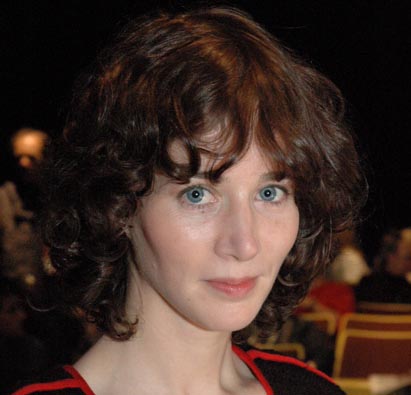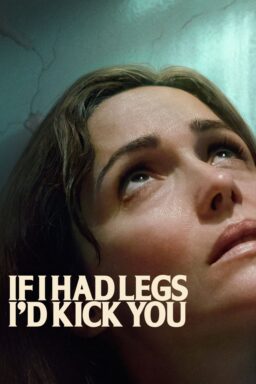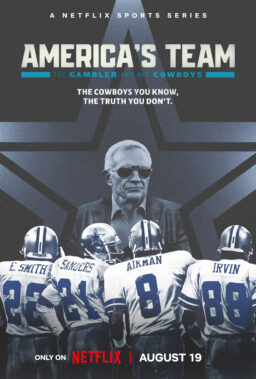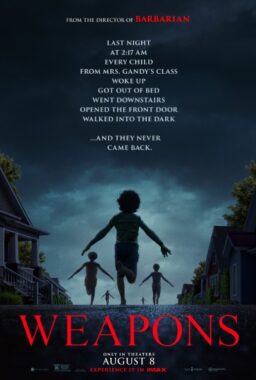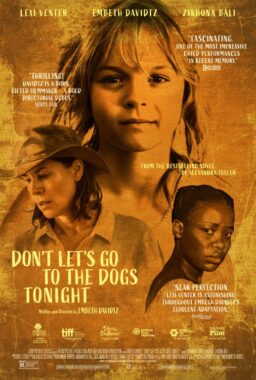It happened like this. I was sitting in a movie that wasn’t working for me. I walked out of the screening, thinking to take the shuttle bus to Prospector Square. But the next bus was going to the Yarrow, and so, what the hell, I went to the Yarrow.
There were two press screenings at the same time. A San Diego State film student in the lobby said he heard good things about “Me and You and Everyone We Know.” And that is how I saw the best film I’ve seen this year at Sundance. Just like that.
The movie was written and directed by Miranda July, the well-known performance artist, who developed it at the Sundance summer workshop. She stars as Christine, a would-be artist and full-time Elder Cab driver. She falls in love at first sight with a shoe salesman named Richard (John Hawkes), who is separated from his wife and helping to raise his two sons. It also involves two sexually curious teenage girls, a solemn neighbor girl, a dirty old man, some art curators, and me and you.
We are involved because the movie, with perfect control of tone and an insidiously haunting sound track, weaves us into its world. I have rarely felt so contained by a film. “Me and You and Everyone We Know” is delicate, tender, poetic, and yet so daring in some of its scenes that you sit in uncertain suspense, wondering if July can get away with her audacity, which ventures to the edge of what mainstream audiences find acceptable. She can. She knows exactly what she’s doing.
Like David Gordon Green, Miranda July writes dialog that you have never heard anybody say before, and yet you believe these characters would say it. I will not describe the plot, partly because the plot is not the point: It is simply the path these enormously sympathetic but lonely and strange characters follow on their way to tomorrow.
“What if I am a killer of children?” he asks her at one point.
“That would put a damper on things.”
Let me tell you about one scene. After Christine first sees Richard the shoe salesman, they talk briefly and something happens between them. She knows it. He knows it, but doesn’t want to deal with it, because he is going through a divorce and has two boys to raise and doesn’t need romance just at this time.
He leaves the store to walk to his car. She catches up with him. They walk together. Playing with words, they pretend that this walk is their lifetime. So when they get to Leland Street, that will be halfway through their lives. At Tyrone Street, she has to turn one way, and he the other.
“But I’m thinking like Tyrone is our whole lives,” she says. If they don’t separate at that corner, they could walk on together forever. Their walk down the sidewalk is one of the most perfectly written and conceptualized scenes I have ever seen.
* * *
Earlier the same day, I went to the tribute screening for Barbara Kopple’s great documentary “Harlan County, U.S.A.,” which won the Academy Award in 1976. The film retains all of its power, in the story of a miner’s strike in Kentucky where the company employed armed goons to escort scabs into the mines, and the most effective picketers were the miner’s wives — articulate, indomitable, courageous. It contains a famous scene where guns are fired at the strikers in the darkness before dawn, and Kopple and her cameraman are knocked down and beaten.
“I found out later that they planned to kill us that day,” Kopple said later, in a discussion I chaired at the Filmmakers’ Lodge. “They wanted to knock us out because they didn’t want a record of what was happening.” But her cinematographer, Hart Perry, got an unforgettable shot of an armed company employee driving past in his pickup, and a warrant was issued for his arrest.
Kopple brought some friends along. Foremost among them was Hazel Dickens, a miner’s wife and sister, now 69, who wrote songs for the movie and led the room in singing “Which Side Are You On?”
Kopple also shared the stage with Utah miners who are currently on strike; although the national average pay for coal miners is $15 to $16 an hour, these workers — who are striking for a union contract — are paid $7 for the backbreaking and dangerous work.
Using a translator, the Spanish-speaking miners told their story. One detail struck me with curious strength. A miner complained that his foreman demanded he give him a bottle of Gatorade every day as sort of a job tax. It is the small scale of the bribe that hit me, demonstrating how desperately poor these workers are. Work it out, and the Gatorade represents 10 percent of a daily wage.
Kopple and Davis spent 18 months in Harlan County, filming what happened as it happened. Her editor, Nancy Baker, who was also onstage, took hundreds of hours of footage and brought it together with power and clarity. I asked Kopple what she thought about other styles of documentaries, like Michael Moore’s first-person adventures, or the Oscar-nominated “The Story of the Weeping Camel,” which is scripted and has people who portray themselves, but is not a direct record of their daily lives.
“I accept any and all kinds of documentaries,” she said. “‘Harlan County’ came out of the tradition of Albert Maysles and Leacock and Pennebaker, documentarians who went somewhere and stayed there and watched and listened and made a record of what happened. That is one approach. There are others, just as valid. All that matters is making a good film.”
* * *
Another Sundance treasure: Adrienne Weiss’s “Love, Ludlow,” a bittersweet romantic comedy about an abrasive office worker named Myra (Alicia Goranson), who keeps guys at a distance but is worn down by the determination of her shy co-worker, Reggie (David Eigenberg). He’s a loner who thinks he may have finally found someone he could get along with. Tentatively, awkwardly, they start to see each other, but the elephant in the room is her brother Ludlow (Brendan Sexton III), a spoiled, lazy, socially inept agoraphobic who sees Reggie as a threat.
The screenplay by David Patterson makes these characters into distinctive originals, eccentrics right on the edge of being impossible. “I heard it takes more muscles to frown than to smile,” Reggie tells Myra. “That’s how I work out,” she says.
* * *
A happy note. Faithful readers will know that I lost my Levenger Pocket Briefcase, a little leather pouch that holds 3×5 cards and is ideal for taking notes during movies. It has been with me through dozens of festivals and thousand of films, but disappeared Thursday night.
Friday, as I walked into the Kopple panel, this invaluable treasure was handed back to me by Bill Barrett, who works with Joel Siegel on “Good Morning, America.”
“I found it under your seat after ‘Strangers with Candy,'” he said. “I was thinking of auctioning it on eBay.”
“I would have bought it,” I said.
Barrett will receive autographed copies of my two new books, which he is free to put directly onto eBay, unless of course he is distracted by the uncanny quality of my prose.

